The Beatles revolutionized everything we know about popular music today. I am not unique in being a big Beatles fan and there are lots of good websites available to learn more about their history, music, and legacy. Here are my comments on their albums and links to some other good resources.
For those who don’t know, the British and US releases of the Beatles’ albums were very different, especially in the early years. (Many of the US albums were shorter and contained a mix of newer material and songs previously released in Britain.). With one exception, the original (British) albums became the standard for later releases on compact disc and, as here, are usually what is referred to when talking about “the” albums of the Beatles.
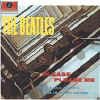
Please Please Me (1963)
Though dated, Please Please Me is a decent album when you consider that most of the songs were intended as “filler”—inconsequential songs and covers designed to simply make up an album to showcase the obvious hits. The tunes written by McCartney and Lennon are clear evidence that they had already tapped into their ability to write strong catchy songs. The rest of the songs were a good chance for the boys to play around with their musical influences and interests at the time (rock and roll, beat, Motown, western) and thus lay the groundwork for their own musical style later.
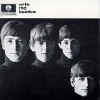
With the Beatles (1963)
Like Please Please Me, this album showcased a small number of Lennon/McCartney hits along with a lot of less long-lasting songs and covers. None of the songs are considered mega-hits of the group but there is a definite sense of fun about “All My Loving” and “Money (That’s What I Want)”. The album was created very soon after their last to capitalize on the growing Beatlemania at home and abroad.

A Hard Day’s Night (1964)
The first indication of how the Beatles would be much more than a “teen sensation”, this album was their strongest up to that time—hardly surprising given that every song was a Lennon/McCartney creation. The overall tone of the album is still light and exuberant like past releases. However, the tunes are actually a bit more musically complex and interesting than before. The album’s tie to the movie of the same name also adds a visual dimension to many of the songs (it’s hard to hear “Can’t Buy Me Love” and not imagine the foursome running around in a big field.)

Beatles for Sale (1964)
Many consider this album a step back in that it contains only a few songs penned by the Beatles and several, rather lifeless, covers. (Apparently it was hastily put together after an exhausting tour and without much enthusiasm on the part of the group.) Though there are a few gems (“Eight Days a Week”, “I’ll Follow the Sun”, John’s performance on “Rock and Roll Music”), even the Lennon/McCartney songs here are rather lackluster.

Help! (1965)
Getting back on track, the Beatles released this album which contained a lot of great songs written by the Beatles themselves. Like Hard Day’s Night, many of the songs were featured on a Beatles movie. The album is a lot more varied in tone and song style, however. In fact, there is evidence of the particular musical bents of the individual members emerging here. The moody and introspective delivery that would become John’s trademark seems to emerge on “You’ve Got to Hide Your Love Away”. “Yesterday” is obvious evidence of Paul’s move toward ballads. Even Ringo’s ‘silly song’ contribution takes shape here with “Act Naturally”.

Rubber Soul (1965)
Rubber Soul was the first of the Beatles’ albums to soar in both musical quality and lyrical expression. Not only was the writing more sophisticated than ever, it was also beginning to deal with more serious or abstract themes. Most people note that the first non-romantically themed Beatles song “Nowhere Man” makes it appearance here, for example. There is a definite sense that the group had committed to broadening the musical landscape with the idea that an entire album (not just a few hit songs) could have substance and depth. Songs like “Norwegian Wood”, “Girl” , and “Drive My Car” were decidedly unique and artistic in their presentation.
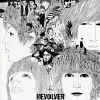
Revolver (1966)
Considered by many to be the best Beatles album of all in terms of overall quality and strength of songs, it’s one you can listen to over and over and enjoy every time. Like Rubber Soul, the album is full of songs that went far beyond the conventions of the time. There is evidence of the Beatles experimenting with new ideas and styles—from the Eastern-themed “Tomorrow Never Knows” to the changing social mores in “For No One”. The album really shows the strengths of the individual members: Paul’s sweeping use of orchestra in “Eleanor Rigby” and upbeat brass on “Got to Get You Into My Life”, John’s double lyrics and reverse tracks on “I’m Only Sleeping” and “Doctor Robert” , George’s sitar on “Love You To”, and Ringo’s jolly “Yellow Submarine”.
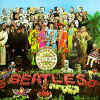
Sergeant Pepper’s Lonely Hearts Club Band (1967)
Though the Beatles had been challenging convention for some time, it is this album that usually gets credited with totally changing the face of album creation and the expectations of what artists should be striving for in their music. The Beatles plunged into a full focus on studio work and with very creative results. Everything about the album was meticulously crafted—from imaginative lyrics to extensive song production to elaborate cover art to the creation of a persona for the group members themselves. I love listening to this album because the songs are so layered with sounds and images. The Beatles pull in a lot of interesting instrumentation and effects. The entire work flows from one song to another with alternatively dreamlike or celebratory moods. All this is packaged together between the bookends of an introduction and farewell from the Sergeant Pepper’s “band” which serves to unify the album as a whole.

Magical Mystery Tour (1967)
Though it can hardly be called a film, the semi-documentary Magical Mystery Tour was the third Beatles movie and the source for the creation of this album. This was originally an EP in Britain with the title song and the five songs thereafter tied to the movie’s vision of being whimsical, mysterious, or simply psychedelic. Though none were number one hits, many of the songs on the EP became very well- known and representative of the Beatles style. The best songs from this period, however, are the separate hits of “Strawberry Fields”, “Penny Lane”, “Hello Goodbye”, and “All You Need is Love” which were all hit singles released previously. These were all included on the longer US album edition of Magical Mystery Tour which has become the accepted standard today.

The Beatles [The White Album] (1968)
The White Album has taken on legendary status, largely because it was quite an ambitious release. Not only was it a double album but it was a surprising hodge-podge of song styles and musical experiments. The strength of the Beatles song-writing and creativity by this point really shows. Many of the album’s songs were created to sound ‘off-the-cuff’ and are little more than snippets of ideas. Others are considered masterworks of writing and artistry. The musical genres given treatment include pop, driving rock, country, music hall, surf music, blues, and more. Despite the strange combinations, all of the songs are incredibly fascinating and take the listener through a broad range of emotions while listening. Indeed, its variety may have been one of the most popular aspects of the album. Taken as a whole, the album is evidence of four incredible talents trying their hand at a variety of projects and sweeping them into a whole album that helped to confirm their standing as musical genius.

Yellow Submarine (1968)
Coming from the fourth Beatles ‘movie’, Yellow Submarine is largely a film score with only six actual songs on it. The popular title song was a previous release that, because it became the focus of the psychedelic animated feature, took on a whole new standing in the group’s image. The other big hit on the album (“All You Need Is Love”) was also a previous release . The remaining songs have not usually garnered much attention though the gritty blues-tinged “Hey Bulldog” and percussive, organ-driven “It’s All Too Much” are pretty good in their own right.

Abbey Road (1969)
Abbey Road was actually the last album recorded by the Beatles (the follow-up Let It Be having been recorded and shelved some time prior) and thus is an interesting indicator of where their music might have headed had they continued as a group into the 70s. With heavy use of the Moog synthesizer and other instruments, there is more of a return to the mid-sixties studio masterpieces than the back-to-basics Let It Be. Opinions vary about Abbey Road, but many do consider the album to be another one of the Beatles best. The first half of the album is a collection of great songs and delivery from John’s hazy “Come Together” to Paul’s belted out “Oh! Darling”. George and Ringo finally got their own recognition with big hits on “Something” and “Octopus’s Garden”. The most important aspect of Abbey Road, however, is the wonder “medley” of final songs which proves that great music can be more than the sum of its parts. Taking pieces of unfinished or discarded song ideas, the Beatles were able to weave these all together in a long musical suite. Brought all together, the various song pieces and lyrics play off of each other, catching the listener up in a wonderful rise and fall of emotions.
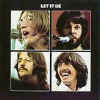
Let It Be (1970)
The album itself began with the idea of getting ‘back to basics’. The group wanted to create an album with no special production and tracks, just live session playing recorded on the spot and centered on songs that got back to the rock and roll roots of the Beatles. The event was also filmed with the intention of having a documentary of the Beatles creative process. Unfortunately, the entire recording process was incredibly tense and unfriendly and ended disastrously with the film showing only the final breakdown of the group itself. The music project was shelved and would only resurface later when Phil Spector put together the album and, going against the original idea of the album’s creation, added a lot of additional tracks. While this ‘Spectorization’ angered some fans and members of the group, there are nevertheless some landmark Beatles songs on the album (“Get Back”, “Let It Be”,”The Long and Winding Road”) though the album as a whole is not remarkable. By the time of its completion and release, the group had already basically parted ways.
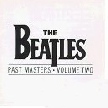
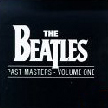
Past Masters Volumes 1 and 2
The Past Masters volume series are compilations of all of the Beatles releases not found on the albums above. Because so many of the Beatles’ number one hits only ever appeared as non-album singles, there are a wealth of very famous and very good tunes offered on this set (from “I Want to Hold Your Hand” to “Paperback Writer” to “Hey Jude”). However, most of the same hit songs can be found on any good compilation. The real songs of interest on these albums are the B-sides of those hits (“Rain”, “The Inner Light”) as well as the various songs found only on US albums (“This Boy”) or EP collections (“Long Tall Sally”) or singles that were different from the album version (“Revolution”. “Across the Universe”). Not that essential for casual listeners, but still must-haves for anyone trying to hear all of the Beatles music.



Anthology 1, 2, and 3
This set of double disc releases was part of a huge documentary about the Beatles and their lives. Most famously, they contain the only two “new” Beatles recordings created after the group’s breakup. Taking old vocal tracks of John, the remaining Beatles were able to create two new songs “Free as a Bird” and “Real Love”. The bulk of these anthologies, however, is made up of alternate takes, live recordings, demos, and unreleased tracks from throughout the Beatles’ recording career. There is not much on here for someone not a fan of the group, but the entire series is rather interesting to hear the differences from the final songs and to learn a little bit about the creative processes that led up to those releases.
Here are links to more Beatles information and album reviews that I’ve found interesting:
The Beatles – Official site with some interesting updates and history.
I am the Beatles – This informative site contains a wealth of historical information about the various albums of the Beatles and the songs contained on them.
Adrian’s Album Reviews – The Beatles section of this website gives some interesting personal views and impressions of the various Beatles albums. Readers are able to comment which provides an even more interesting angle on the (often disputed) reviews.
Allmusic.com – This music search site has an excellent section on the Beatles albums. In addition to a full discography and history, almost every song has an individual review in which the history of the song, its musical structure, and influences are discussed.
